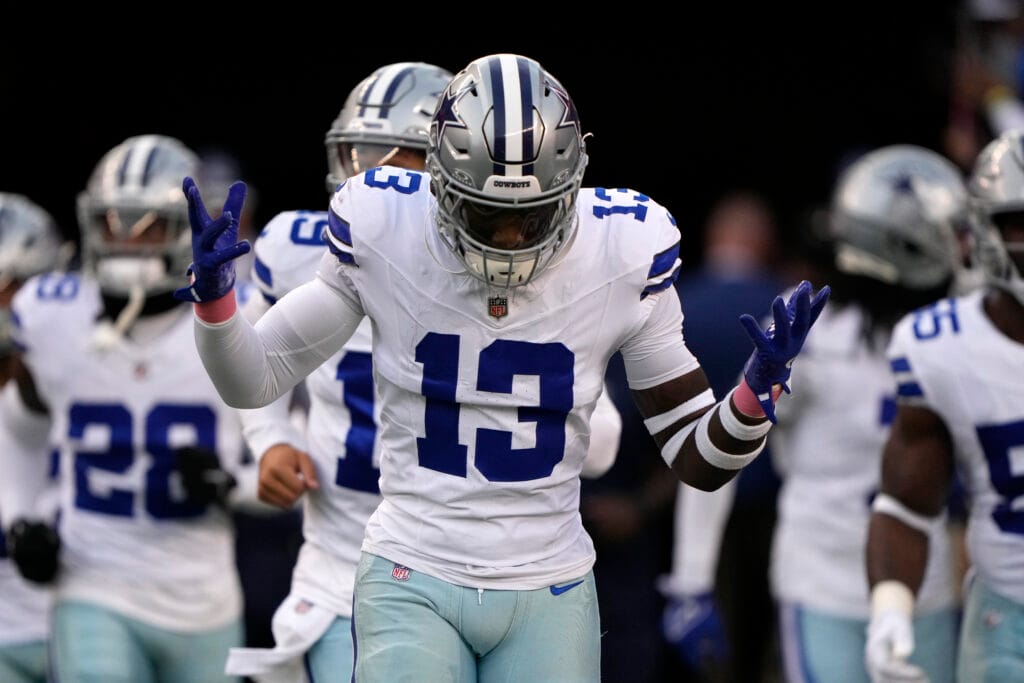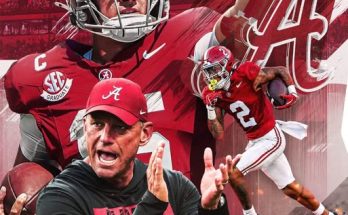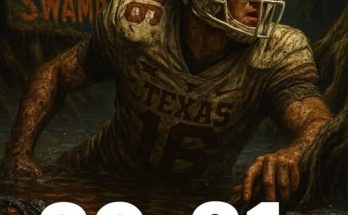The Dallas Cowboys have long been known for their fierce and opportunistic defense, a unit that has seen its fair share of legendary players over the years. From the “Doomsday Defense” in the 1970s to the dominant playmakers in more recent years, the Cowboys have consistently fielded a defense that could compete with the best of them. However, the departure of several key veterans marks the beginning of a new era for the Cowboys’ defense, one that will require adaptation, fresh leadership, and perhaps a few growing pains before the unit finds its new identity.
In 2025, the Dallas Cowboys’ defense will be without some of its longtime cornerstones, signaling a shift in both personnel and philosophy. The loss of veterans who were integral to the defense’s success over the past few seasons — combined with the emergence of younger talent — will usher in a new era of playmaking and strategy.
This article will explore the impact of these departures, the evolution of the Cowboys’ defensive system, the incoming talent that will take over, and how all these changes contribute to a reshaping of the Cowboys’ defense in the upcoming season.
The Departures That Signal Change
Over the past few seasons, the Dallas Cowboys’ defense had some prominent veterans, many of whom played critical roles in their playoff contention. Key players like DeMarcus Lawrence, Anthony Barr, and Leighton Vander Esch helped provide leadership and consistency on the defensive side of the ball. However, as the NFL continues to evolve, so too does the nature of the Cowboys’ defense.
DeMarcus Lawrence: A Legacy of Consistent Pass Rush
DeMarcus Lawrence, often regarded as one of the cornerstones of the Cowboys’ defense, recently departed. Lawrence’s consistent ability to rush the passer made him a crucial figure in the Cowboys’ defensive line for nearly a decade. His combination of leadership, edge-rushing prowess, and high motor helped stabilize a defense that has faced numerous challenges over the years.
Though Lawrence’s production dipped slightly in recent seasons, he was still a respected figure in the locker room. His departure creates a significant gap, particularly in terms of the leadership and veteran experience he provided. The Cowboys will now need to look to younger pass rushers to step up and replace his ability to disrupt the quarterback.
Lawrence’s exit from Dallas represents the end of an era. No longer will the defense rely on his consistency as a disruptive force, meaning the team will need to reconfigure their pass rush strategy to maintain the same level of pressure on opposing quarterbacks.
Anthony Barr: A Defensive Veteran on the Edge
Veteran linebacker Anthony Barr joined the Cowboys for a brief stint, offering a steady hand in an otherwise young linebacking core. Barr’s experience, especially his time with the Minnesota Vikings, provided the Cowboys with a physical and capable linebacker to help lead the defense. Known for his ability to rush the passer and cover ground in both the run and pass game, Barr’s presence allowed the Cowboys to execute complex defensive schemes.
However, Barr’s departure leaves another leadership void. His versatility in both coverage and blitzing will be sorely missed, as the Cowboys will now have to lean on younger linebackers who may not possess the same level of experience. The absence of Barr also signals a transition in the Cowboys’ linebacker corps, as new players will need to embrace more responsibilities.
Leighton Vander Esch: A Heartbeat of the Cowboys’ Defense
Leighton Vander Esch’s tenure with the Cowboys was marked by both promise and frustration due to injury issues. When healthy, Vander Esch was one of the top linebackers on the team, known for his ability to read plays, tackle with precision, and lead the defense with his instincts. Unfortunately, his injuries limited his impact, and the Cowboys ultimately parted ways with him.
Vander Esch’s departure represents not only a loss in terms of playmaking ability but also the loss of a key leader in the defensive huddle. Vander Esch had been with the Cowboys since 2018, and while injuries prevented him from reaching his full potential, his absence still leaves a hole that the team will have to fill, both in terms of play on the field and leadership in the locker room.
The Evolution of the Cowboys’ Defensive System
While the departures of these veteran players may seem like the end of an era, they also provide an opportunity for the Dallas Cowboys to reshape their defense around new philosophies, schemes, and personnel. The team’s defensive coordinator, Dan Quinn, has brought a new identity to the defense since joining in 2021, and the changes in the roster will push this evolution forward.
Dan Quinn’s Influence: Aggressive, Versatile, and Adaptive
Dan Quinn has played a major role in reshaping the Cowboys’ defense into one that is faster, more aggressive, and more adaptable. Under Quinn’s leadership, the Cowboys defense has seen a noticeable shift toward a more attacking approach, one that relies heavily on the versatility of the front seven and the ability to create pressure from multiple positions.
Quinn is known for his ability to get the most out of his players and use their strengths to his advantage. For example, he’s maximized the talents of Micah Parsons, transforming him from a promising rookie into one of the most feared defensive players in the NFL. As a result, Quinn has empowered players like Parsons to be disruptive, taking advantage of their natural pass-rushing instincts, coverage skills, and overall athleticism.
With the departure of veteran players like Lawrence and Barr, Quinn now has an opportunity to fully implement his vision of a defense that can create mismatches and generate pressure in a variety of ways. This shift will allow the Cowboys to experiment with different personnel groupings and defensive schemes that can confuse opposing offenses.
Additionally, the Cowboys’ defense will now be more reliant on younger players, which plays into Quinn’s strength as a coach who develops talent. Under Quinn, the Cowboys have cultivated young players into key contributors, with players like Trevon Diggs and Micah Parsons becoming cornerstones of the defense. With the veterans leaving, Quinn will have the chance to mold younger players into significant contributors, fostering a new era for the defense.
The New Faces of the Cowboys’ Defense
While the veterans’ departures leave gaps in leadership and production, the Cowboys have a wealth of young talent ready to step up and carry the defense into the next chapter. These emerging players are poised to take on larger roles and potentially become the new faces of the Cowboys’ defense.
Micah Parsons: The Next Defensive Superstar
Micah Parsons has already established himself as one of the most dynamic defensive players in the NFL, and with the departure of DeMarcus Lawrence, he is poised to become the undisputed leader of the defense. Parsons’ combination of speed, strength, and football IQ makes him a nightmare for opposing offenses, and he is the cornerstone on which the Cowboys’ defense will be built moving forward.
In his first two seasons, Parsons has proven to be a versatile weapon, capable of lining up as an edge rusher, off-ball linebacker, and even in coverage. With Lawrence now gone, Parsons will likely see even more opportunities to rush the passer and be the focal point of the defense. The Cowboys will lean on his ability to disrupt plays, create turnovers, and make game-changing tackles.
Parsons’ ascent to defensive leader also means he will be taking on more of a leadership role, both on the field and in the locker room. His work ethic, passion for the game, and undeniable talent make him a natural fit to lead the defense into a new era.
Trevon Diggs: A Lockdown Corner in the Making
Another key figure in the new era of the Cowboys’ defense is cornerback Trevon Diggs, who has already made a name for himself with his ability to create turnovers. Known for his aggressive playstyle and ball-hawking abilities, Diggs has become one of the most exciting cornerbacks in the NFL.
With the defense shifting to a younger core, Diggs will be relied upon to become the shutdown corner that the Cowboys have lacked for years. His ability to cover top wide receivers and take away passing lanes will allow the Cowboys to focus on more aggressive, blitz-heavy defensive schemes without worrying about opposing wide receivers running rampant.
In the absence of veteran leadership from players like Lawrence, Diggs’ role as a defensive playmaker will become even more important. His ability to turn the ball over could be a key factor in the Cowboys’ defensive strategy as they evolve into a more opportunistic unit.
New Faces in the Defensive Line and Linebacker Corps
The departures of Lawrence and Barr have created holes in the Cowboys’ defensive front. As a result, the Cowboys will need new players to step up in these key positions. Sam Williams, a promising young edge rusher, is expected to take on a larger role in the defensive line rotation. Williams showed flashes of potential in his rookie season and could be poised for a breakout year as he gets more opportunities to rush the passer.
At linebacker, Damone Clark and Jabril Cox are young players who could step up and fill the void left by Vander Esch and Barr. Both players have shown potential in limited roles and are now poised to take on more significant responsibilities. If they can adapt to the speed of the NFL and continue to develop, the Cowboys could have a very dynamic linebacking corps going forward.
The influx of younger players into these positions will give the Cowboys a more athletic, fast-paced defense. This new era will feature speed, aggression, and adaptability, as opposed to relying heavily on veteran leadership.
Embracing the Change and Looking Forward
The departure of key veterans like DeMarcus Lawrence, Anthony Barr, and Leighton Vander Esch may signal the end of an era for the Dallas Cowboys’ defense, but it also marks the beginning of a new chapter. The Cowboys are positioning themselves to evolve into a faster, more aggressive unit under the leadership of Dan Quinn, with younger players like Micah Parsons, Trevon Diggs, and others poised to take on more prominent roles.
While the transition may come with some growing pains, the talent is in place for the Cowboys’ defense to continue being one of the league’s top units. With a new identity forming, the 2025 season could be the start of a new era for the Cowboys’ defense — one that emphasizes playmaking, versatility, and youth. As the old guard gives way to the next generation, the Cowboys will look to continue their defensive dominance and make a legitimate push for a Super Bowl title.



